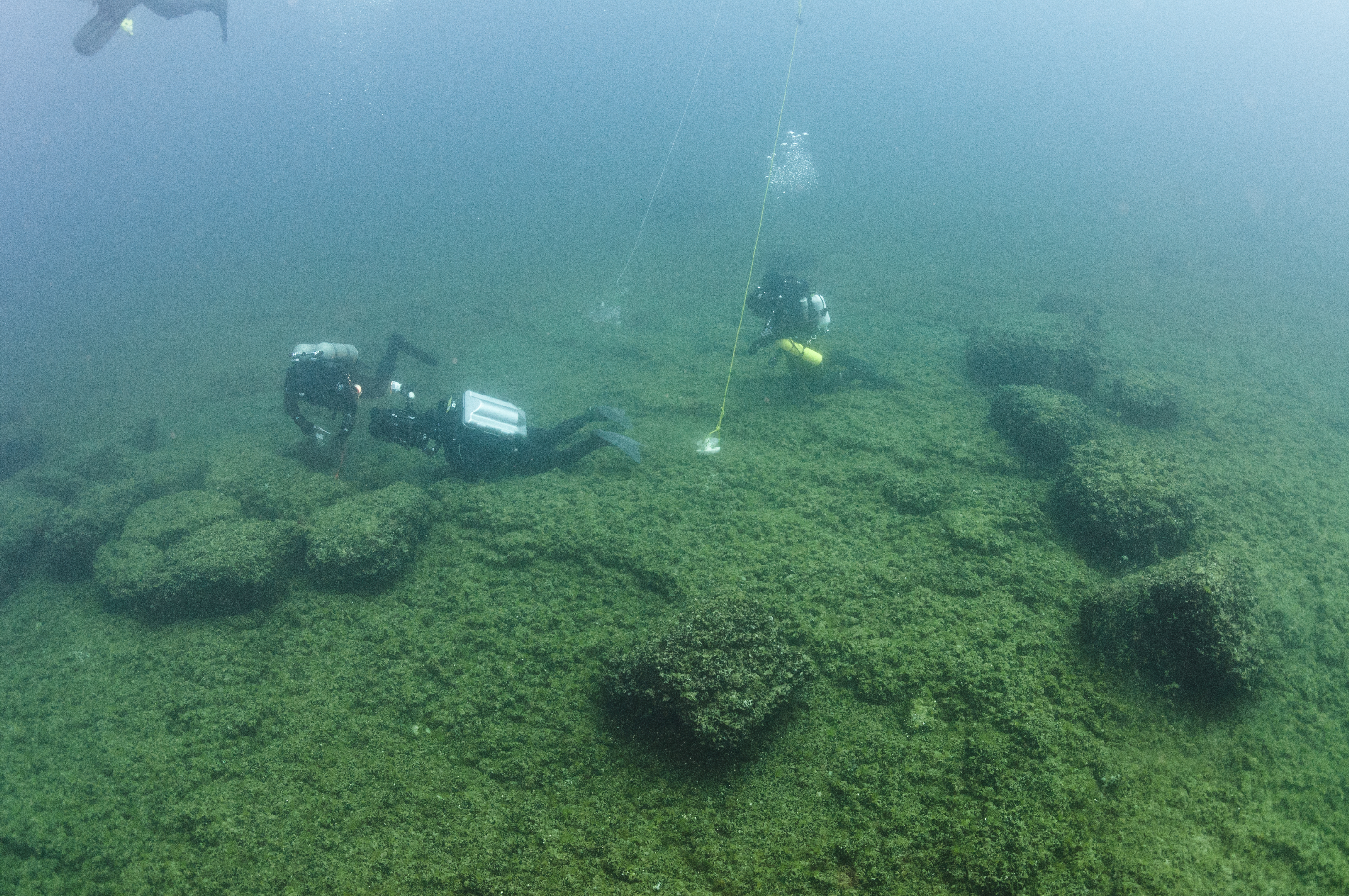Anthropology
Related: About this forumClues to the Lives of North America's First Inhabitants Are Hidden Underwater
Submerged prehistory holds insights on the first humans to live in North America
Sean Kingsley
History Correspondent
March 29, 2023

Archaeologists collect samples from a prehistoric caribou hunting site on Alpena-Amberley Ridge in Lake Huron. Tane Casserley
Below the surfaces of freshwater springs, lakes and rivers, sunken landscapes hold clues about the daily lives, beliefs and diets of the first humans to settle in what is now the United States. But submerged prehistory, as the study of these millennia-old sites is widely known, is often overlooked in favor of more traditional underwater archaeology centered on shipwrecks.
“There’s tremendous work to be done,” says Barbara Purdy, author of The Art and Archaeology of Florida’s Wetlands and an emeritus anthropologist at the University of Florida. “Fast-developing technology holds great potential to explore what lies below. One day, the sunken world will unlock the answer to how America was really settled and how [our] ancestors lived.”
From Miami to Lake Huron to Warm Mineral Springs, these are three sites driving the conversation about the nascent discipline.
Warm Mineral Springs
The hunt for sunken evidence of early humans in North America began some 60 years ago with a swirl of controversy in southwestern Florida. In 1959, retired Air Force Lieutenant Colonel William R. Royal uncovered traces of prehistoric people while diving at Warm Mineral Springs, an hourglass-shaped sinkhole formed when an earthquake collapsed a subsurface cave around 20,000 years ago. Because Royal was “an untrained amateur,” says Purdy, “scientists poured cold water over his bold claims.”
More:
https://www.smithsonianmag.com/history/biggest-clues-lives-early-americans-hidden-underwater-submerged-prehistory-180981891/
Judi Lynn
(160,598 posts)The developer behind the project is the Related Group, founded by the billionaire art collector Jorge M. Pérez
Carlie Porterfield
7 April 2023
Miami officials voted this week to allow work to continue on new luxury high rise buildings being developed by one of the city’s billionaire art collectors even after ancient Indigenous artefacts dating back thousands of years were discovered during construction.
After beginning construction on three Baccarat-branded luxury high-rise towers in Miami’s upscale Bricknell neighbourhood, artefacts were discovered that archaeologists believe are linked to the Tequesta people, one of the earliest Native American groups that occupied the area. Archeologists found pieces of pottery and artefacts made of bone at the site, along with fragments of human remains.
On 4 April, the City of Miami’s Historic and Environmental Preservation Board met to determine a course of action in response to outcry from local residents, including Native American activists and archaeologists. The board voted to allow two of three planned towers to go up. The board voted to withdraw a proposal that would designate one lot that has already been dug up as historic if developers prepare a plan of action for the site. In another vote, board members approved taking steps toward designating a third lot, which has not been excavated, as a landmark.
"This site is significant because it represents … the birthplace of Miami. This is a place, just like this is prime real estate today, this was prime real estate 2,000 years ago," William Pestle, an anthropologist at the University of Miami, told NBC Miami.
More:
https://www.theartnewspaper.com/2023/04/07/miami-officials-approve-luxury-high-rise-despite-native-american-site
wnylib
(21,571 posts)where Beringia once existed. But, from what I've read, the Bering Strait area is difficult for boats to navigate, which might create obstacles for archeology teams.
The entire Pacific coast of both North and South America is another area where I think that offshore underwater archaeology might reveal information about the first people in the Americas. The coastal areas where people conceived are now under water.